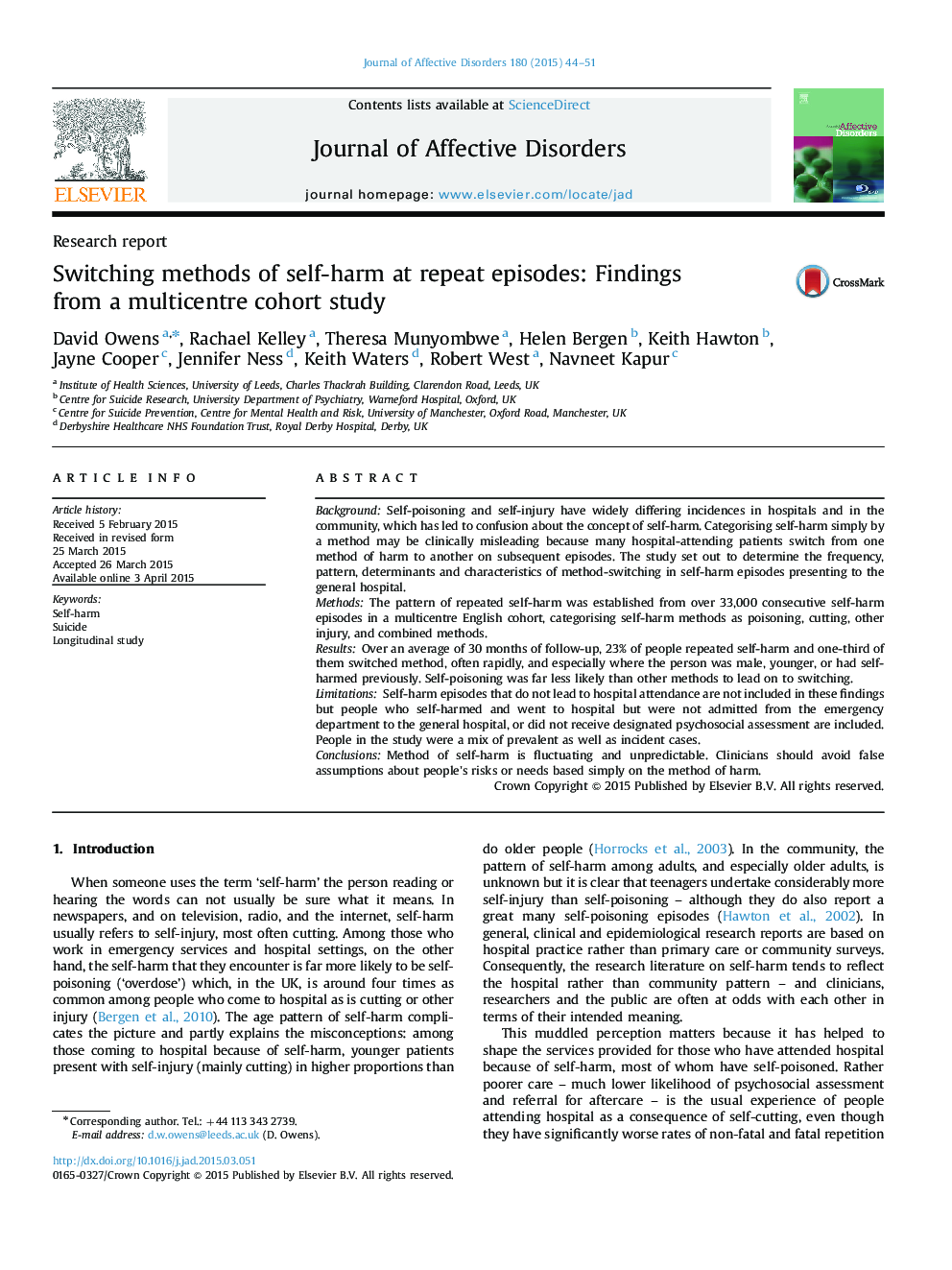| Article ID | Journal | Published Year | Pages | File Type |
|---|---|---|---|---|
| 6231571 | Journal of Affective Disorders | 2015 | 8 Pages |
BackgroundSelf-poisoning and self-injury have widely differing incidences in hospitals and in the community, which has led to confusion about the concept of self-harm. Categorising self-harm simply by a method may be clinically misleading because many hospital-attending patients switch from one method of harm to another on subsequent episodes. The study set out to determine the frequency, pattern, determinants and characteristics of method-switching in self-harm episodes presenting to the general hospital.MethodsThe pattern of repeated self-harm was established from over 33,000 consecutive self-harm episodes in a multicentre English cohort, categorising self-harm methods as poisoning, cutting, other injury, and combined methods.ResultsOver an average of 30 months of follow-up, 23% of people repeated self-harm and one-third of them switched method, often rapidly, and especially where the person was male, younger, or had self-harmed previously. Self-poisoning was far less likely than other methods to lead on to switching.LimitationsSelf-harm episodes that do not lead to hospital attendance are not included in these findings but people who self-harmed and went to hospital but were not admitted from the emergency department to the general hospital, or did not receive designated psychosocial assessment are included. People in the study were a mix of prevalent as well as incident cases.ConclusionsMethod of self-harm is fluctuating and unpredictable. Clinicians should avoid false assumptions about people׳s risks or needs based simply on the method of harm.
